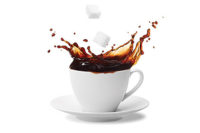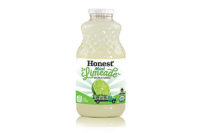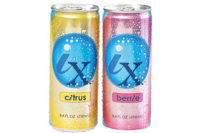If you need an icebreaker to use at a dairy-industry gathering, try this: “Functional foods: passing fad or future of the business?” It works wonders at sparking discussion.
Dairy processors — indeed, the entire food industry — have been awaiting functional foods’ imminent ascendance for what feels like decades now. And while growth rates and sales projections impress, the functional sector can’t quite seem to escape the “niche” status that’s hounded it, in the United States at least, since the start.
With one exception: functional beverages. Good-for-you drinks have been on a tear, with beverages accounting for 63% of the more than $44 billion in sales that the combined functional food and drink category rang up in 2012, according to New Hope’s Next Forecast 2014. And it makes good sense, too.
As Rikka Cornelia, product manager, BI Nutraceuticals, Long Beach, Calif., said, “While consumers are just starting to familiarize themselves with functional foods, functional beverages have already established their presence in our lives.”
And perhaps no functional beverage is more firmly established than milk and the many offshoots made from it. That’s why now’s a boon time to be a dairy manufacturer exploring the functional-beverage landscape.
With the segment “at the start of an exciting innovation stage, formulators are able to let their creativity run wild with new delivery formats, better-for you ingredients and a broadened scope for product functionality,” Cornelia said.
The dairy-drink advantage
In the “fad-or-future” debate surrounding the functional category, Cornelia comes down squarely on the side of the latter.
“Functional foods and beverages have moved past the ‘fad’ phase and are here to stay,” she said. “The global market was estimated to grow by 7% to $176.7 billion in 2013, and beverages lead the category with a growth rate of 10.8%.”
That dominance is a direct consequence of the beverage medium’s intrinsic advantages. For one, consumers continue to look for easy and convenient ways to support their healthy lifestyles, said Michael Bush, senior vice president, Ganeden Biotech, Mayfield Heights, Ohio.
“Functional beverages are great for delivering desirable health benefits without changing day-to-day routines,” he said. Combine that with grab-and-go portability and a wide range of flavors and it’s easy to see why functional beverages are “already a part of most of our days,” he said.
But even beyond these basic assets, dairy beverages enjoy a functional edge that processors would be wise to exploit.
Said Cornelia, “Dairy is inherently functional and healthy, and consumers are well aware of this. This leads to greater acceptance of functional dairy-based products since individuals are more willing to try new products when delivered in something familiar, like milk. Manufacturers don’t need to focus on proving the beverages’ benefits as much as they do with functional foods.”
What’s more, the conceptual leap from a dairy favorite like yogurt to, say, a drinkable yogurt smoothie is relatively slim.
“Individuals associate yogurt with a certain degree of acidity and thickness,” Cornelia noted, meaning that product developers don’t have to “fix” these attributes from a sensory standpoint when spinning traditional yogurt into a yogurt-based drink.
This gives them more room for creativity with taste and texture, she said, not to mention more flexibility to incorporate functional traits, like protein or probiotics, without worrying about staying within a very narrow window of acceptability.
“This not only applies to yogurt-based products,” she added, “but to milk-based products in general.”
And as if that weren’t enough, dairy processors are already ahead of the game when it comes to production. “It may be easier for milk producers to move into the functional drink-space,” Cornelia noted, “simply because they already have the processing and packaging lines in place.”
What consumers want
The next step then becomes identifying which functional benefits to deliver, and which tools will best deliver them. For guidance on the former, look no further than the market, said Gwen Bargetzi, director of marketing, Hilmar Ingredients, Hilmar, Calif.
“Many consumers have specific illnesses in mind when they shop: ‘Will this product strengthen my heart?’ ‘How can I lose weight without feeling hungry?’” she said.
Such concerns can guide dairy processors in product development. Bush said energy, digestive health and meal replacement rank high with consumers.
“Products such as omega-3-fortified milks and standards like Yakult are also getting a good deal of attention,” he said, “especially as Yakult moves into the U.S. market. We expect to see more and more from them.” (Yakult is a probiotic cultured dairy beverage produced by Yakult Honsha Co. of Japan and available in the western United States.)
Cornelia mentioned products that support cognition and weight management, and she said “there’s a market among mainstream consumers for new and interesting flavors and other functional ingredients like antioxidants from superfruits, green tea and chocolate, or added nutrients from fruit and vegetable powders.” The challenges, she said, “lie in the development and marketing of new beverages. Formulators must include enough functional input for the consumer to feel the benefit while still ensuring the beverage tastes great and engages and entices consumers to try something new.”
Protein power
Jean Heggie, strategic marketing lead, DuPont Nutrition & Health, St. Louis, said that she and her colleagues are “quite bullish on opportunities focused on child nutrition, healthy aging and active nutrition.”
As it happens, one ingredient that touches on all three areas (and more) is protein. A perennial favorite of the functional beverage crowd, protein keeps going from strength to strength.
“Certainly we’ve seen consumer interest in protein beverages expand considerably in the past few years,” Heggie said. “It stems from their perception that it provides a healthy source of energy, helps manage hunger and is critical for muscle growth and maintenance.”
And if the latest science is anything to go by, that perception fits with reality.
“There are numerous university studies linking protein to health benefits,” said Vicky Fligel, business development manager, Glanbia Nutritionals, Chicago. “We also have consumer-based information that reveals the key reasons consumers seek a protein boost.” To wit: 76% include protein as part of a balanced diet, 62% believe it helps maintain energy and 56% understand that protein helps build or maintain muscle strength, she said.
All the whey
As a principle protein in milk, whey is a natural in functional dairy beverages, where its full complement of essential amino acids earns it favor among a broad range of consumers, from athletes to soccer moms.
“Whey protein has long been recognized for its contribution to muscle and body tone,” Bargetzi pointed out. “And it provides the raw material for the repair of muscle fibers, aiding in the increase of lean muscle mass and protecting muscle against catabolic breakdown.”
These benefits manifest in whey’s “perfect” Protein Digestibility Corrected Amino Acid Score (PDCAAS) — a measure of its nutritional quality — of 1.0, and in its high concentration of branched-chain amino acids, valued for improving exercise performance and muscle development. Whey also has a Protein Efficiency Ratio (PER) of 3.2, Bargetzi said, indicating how effectively the body converts it into useful body mass. For these reasons and more, whey is a frequent flyer in sports-performance and recovery beverages.
Another quickly moving trend is coconut water, Bargetzi said. “Adding whey protein to coconut water creates a satisfying and refreshing pick-me-up that’s perfect as an afternoon snack or following exercise or yoga.”
Hilmar Ingredients developed a coconut water concept that includes a whey-protein blend. A 250 milliliter serving (about 8.4 ounces) of the shake supplies 12 grams of high-quality protein plus potassium at a “good-source” level and is sweetened with coconut sugar and monk fruit extract.
The team has also used whey protein in a vanilla chai-themed whey-and-oat shake that Bargetzi said is low in fat, free of added sugar and satiety-inducing thanks to its 15 grams of whey protein in 250 milliliters and 3 grams of fiber, 0.75 gram of which is soluble oat fiber for heart health.
“An increasingly popular weight-management approach is the ‘satiety diet,’” she said. “In particular, milk-derived whey protein appears to increase the feeling of satiety more than other proteins, such as casein. And along with their satiety effect, high-quality proteins like whey can improve the quality of weight loss by helping maintain muscle mass and increasing fat loss as part of a healthy, reduced-calorie diet.”
Soy solutions
But whey’s not the only game in town, not even in dairy-based protein beverages. As Heggie noted, soy supplies high-quality plant-based protein that’s “successfully used in combination with dairy proteins to achieve higher protein levels in beverages — and to do so more economically.”
She added that soy proteins allow manufacturers to develop completely lactose-free and 100% plant-based beverages which are “a growing trend in the healthy-foods arena.”
From a functionality standpoint, soy proteins are no slouch, either.
“In recently published research with athletes, a blend of our soy proteins in a beverage with dairy proteins was shown to be more effective in extending the time window post-exercise in which muscle-building can occur compared to just whey protein,” Heggie said. “This finding has important implications for active consumers who want to get optimal recovery and results from their training routines.”
Putting protein to work
Designing dairy beverages that capitalize on protein’s benefits is easier than it used to be, thanks to the development of protein ingredients engineered to perform in the dairy-beverage environment. For example, Bargetzi pointed out that whey protein’s solubility across a wide pH range leaves it less likely to precipitate in beverages.
“Other proteins, such as MPC [milk protein concentrate], casein and soy aren’t as soluble at certain pH levels and fall out of solution,” she said. Even better, agglomerated and instantized whey proteins are highly dispersible, even in cold water.
Nevertheless, a dairy beverage can prove rough terrain even for smart proteins. As Fligel pointed out, “Protein yogurt beverages present a particularly challenging formulation and processing environment, as proteins tend to build viscosity and clump.”
And yet given the buzz surrounding Greek-style yogurt, the Glanbia team was intent upon developing Greek-style yogurt beverages and smoothies with the viscosity, texture and flavor consumers love, and the processing qualities that manufacturers require. To crack that code, they went to work with “a unique set of ingredients to allow for a smooth, thin, drinkable texture and mouthfeel,” Fligel said. This includes a protein stabilization system built to create extremely low viscosity and body in yogurt beverages, as well as a Greek-yogurt powder for flavor and clean labeling.
Going probiotic
Crucial to Greek yogurt’s success is its notable protein content, which consumers recognize as adding health-and-wellness value. The same can be said for its association with probiotics, which consumers are also opening up to.
“The probiotic market is hot and growing immensely, with no indication of slowing,” said Bush. He cites projections that the category’s worth will hit $32 billion globally by 2015, with functional foods and beverages accounting for fully $30 billion of that total.
“In addition, consumer awareness continues to grow,” he adds. “Currently, about 80% of consumers know what probiotics are and associate them with a health benefit.”
And with more of them looking for products that deliver probiotic benefits in potable — rather than pill — form, probiotic dairy beverages are poised to satisfy what promises to be a game-changing demand.
What makes Ganeden’s probiotic ingredient especially useful to functional beverage manufacturers is its resilience not only to harsh processing and storage conditions but also to the assaults that come with passage through the human digestive tract. Ganeden’s spore-forming probiotic is said to stand up to high-pressure processing and the K-Cup process (though not to ultra-high-temperature pasteurization). It also survives the low pH of the stomach, which it encounters en route to the intestines where it germinates to provide its probiotic benefits.
And just what are those benefits? Bush said that the bacteria “supports the immune system” at 500 million CFUs (colony-forming units) per day and “supports the digestive system” at 1 billion CFUs per day when used as part of a healthy lifestyle.
Flourishing fiber
Probiotics increasingly turn up in products as a tag team with their prebiotic counterparts — or, to put it more accurately, their prebiotic food sources. Prebiotic fibers, while indigestible to humans, provide just the nourishment probiotic bacteria need to flourish. Yet even if we humans can’t digest prebiotic fibers, that doesn’t mean we can’t reap fiber’s many health benefits. And judging by consumer interest in fiber-fortified beverages, those benefits merit dairy processors’ exploration.
“Fiber is currently one of the most touted and sought-after nutrients for disease prevention, treatment and health promotion,” Cornelia said. Cardiovascular disease, some types of cancer, diabetes, digestion and weight management all make a turn for the better thanks to a diet rich in fiber. And with decades of accumulated evidence attesting to this, FDA has recommended a daily fiber intake of 25 grams, while also approving two health claims linking fiber to the prevention of heart disease and certain types of cancer.
Such claims, as well as the easy incorporation that innovative ingredients lend, make fiber a valuable functional dairy ingredient. In fact, some soluble fiber ingredients derived from corn, as well as chicory root inulin and oligofructose, are virtually invisible in formulation, available in a syrup format that’s not only easy to incorporate into beverages but can even provide a pleasant, slightly sweet taste that permits some reductions in sugar content.
But even more visible forms of fiber can be solid candidates for functional-dairy formulation because “dairy-based beverages are cloudier and thicker than other beverages,” Cornelia pointed out. So if some fiber ingredients confer a thicker texture and degree of opacity, that’s nothing the beverage matrix can’t accommodate. The result: formulators have “a wider variety of functional ingredients to choose from,” she said.
Some fiber ingredients help clean up labels, too.
“An example of a clean-label approach is incorporating psyllium to replace gums and starch,” Cornelia said. Her company’s psyllium ingredient does just that, providing up to 90% dietary fiber while also allowing for a “made with whole grains” claim. She called the ingredient “a great natural alternative to starches and gums.”
So going forward, what further challenges must dairy processors tackle if they aim to take functional dairy beverages to their full potential?
“I think the challenges will be finding the balance between innovation and customer acceptance,” Cornelia said. “Most consumers say they want something new or different, but they’re reluctant to spend their money with the possibility that they may not like the product.”
Bush would agree, adding that the need to gain “consumer mindshare in a crowded category” also warrants attention. All the same, he said, “We believe that easy-to-consume, convenient beverages that appeal to mass-market consumers will be a big hit,” as long as taste and a contemporary lifestyle fit are part of the picture.
But in the end, there’s plenty of room in this sector for creativity and opportunity.
“What’s certain,” Heggie said, “is that health and wellness trends are here to stay, and consumers will be seeking variety in the types of beverages they choose to support their individual nutritional needs.”




